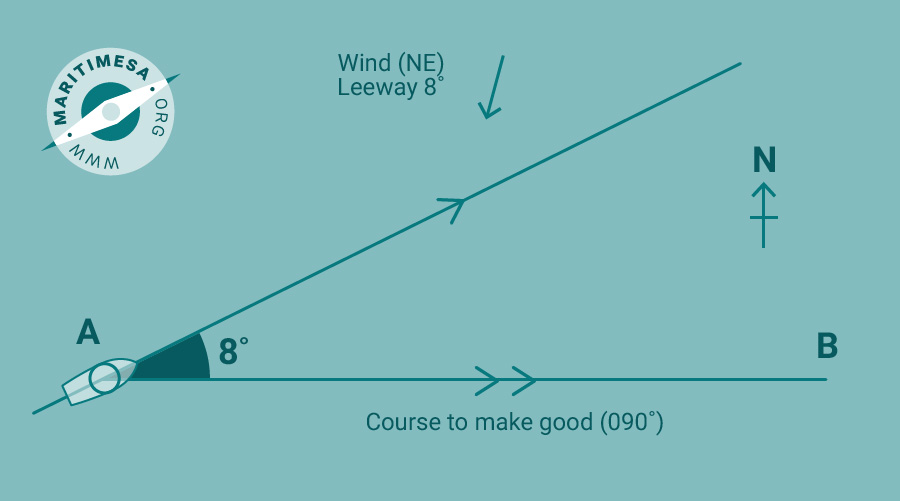Whilst currents/tidal streams have the greatest effect on the movement of vessels, the wind can also affect their movement. The effect of the wind on vessel movement is two fold:
- Firstly, it will cause an increase or decrease of the speed through the water depending on whether the wind is abaft or forward of the beam . The resultant speed through the water will be recorded by certain logs and the speed over the ground or effective speed will only be recorded by a Doppler Log in shallow water or GPS or by calculating the speed between the fixes.
- Secondly, the wind produces a sailing effect caused by the vessel’s superstructure. In general, the vessel will be moved bodily to leeward, the amount will vary with trim, design of the vessel and whether it is in a loaded or light ship condition.
The difference between the fore and aft line and the direction made is termed the Leeway. It can be assessed by visually estimating the angle between the fore and aft line and the ship’s wake.

The diagram shows the effect of the wind on the vessel’s track. The ship’s head indicates the direction steered but that her progress is in the direction of the leeway track. The deviation for the course steered is dependent on the direction of the ship’s head, and as this is not affected by leeway, it is always important that leeway is always applied to the true course.

When it is required to find the course to steer, to counteract the wind, leeway is applied upwind.

When the course steered is given, to find the leeway track, leeway is applied downwind.
Note: The leeway is never shown on the chart, only the leeway track.
Examples of problems involving leeway:
Problem 1:
Find the course made good (leeway track) if a vessel is steering 228° (C) and a SE wind is causing an estimated leeway of 8°. Variation is 23° W and Deviation is 5° E.


Problem 2:
Find the compass course to steer to make good a true course of 335° (T) given a westerly wind causing 7° leeway. Variation is 23° W and Deviation is 7° E.



